In another life, I was a fruit bat. It was pretty awesome. Fortunately my love of fruit carried over to this one… but so did the hair. (Too much?) Naturally then, a product like Bluapple appeals to me. As does a razor.
Simply put, fruits and vegetables naturally release a hormone called ethylene which causes them to ripen. The more fruits and vegetables that are together, the higher the ethylene concentration, the faster they ripen.
Bluapple serves as an ethylene collector, reducing the amount of concentrated ethylene around the fruits and vegetables. In theory, this would function best when in a sealed container.
Let’s take a look and see how things faired.
Disclosure: Aureus Product Innovations provided their product for review, free of charge. No other compensation was received.
If you would like to read a more in-depth approach, you can read this article and the linked third-party research paper.
Bluapple Summary
For those of you who are here to see if it works or not and then wanna’ get outta’ here, this is for you.
Over the course of nine days, I observed four different groups with four fruits each. Two groups were placed in bowls, two were placed in paper bags, one of each had the Bluapple.
As expected, the fruit in the open bowls lasted longer since there was a way for the ethylene gas to escape the container. However, it wasn’t by much. My general thoughts are that yes, it appears* to be effective. Two caveats to that: 1) you need a large number of fruits and veggies, and 2) you don’t cycle through your fruits quickly.
*With the amount of fruit that I used in this observation, it was difficult to draw a solid conclusion.
The Details
I chose the most unripe fruit possible from my local grocery store so that it would have time to ripen in proximity to the Bluapples. None of the fruit was so unripe (except the avocado) as to be inedible at the time of purchase.
Each piece of fruit was inspected in comparison to the others so that they were as close to equal as could be determined.
Fruits used:
- 4x Roma Tomato
- 4x Banana
- 4x Granny Smith Apple
- 4x Avocado
Each fruit was divided equally into 4 different test groups.
- Group 1: Open bowl, no Bluapple.
- Group 2: Open bowl, with a Bluapple.
- Group 3: Paper bag, no Bluapple.
- Group 4: Paper bag, with a Bluapple.
I don’t have any fancy instruments to measure the exact ethylene levels, so this is a matter of observation. Instead of boring you with lots of details, etc. You can check out the pictures and I’ve added a few notes of significant differences.
Day 1 – 0 hours
Here’s the initial set up. All fruit is in its place and ready to do its thing.
Day 2 – 24 hours
I let the fruits sit undisturbed on this day to give them time to ripen.
Day 3 – 48 hours
Bananas. All bananas are softer and exhibit slight browning. The one in Group 3 appears to be softer than the rest.
Tomatoes. All tomatoes are slightly softer, though the one in Group 3 has developed a large soft spot.
Avocados. No change in the avocados, with exception of the one in Group 3, which is slightly softer than the rest.
Apples. No change.
Day 4 – 72 hours
Bananas. All softer with more brown spots. Most brown spots on Group 3.
Tomatoes. Groups 1 & 3, no changes. Group 2, moldy, ewww! Group 4, Tomato is developing a few small, soft spots, but overall still firm.
Avocados. Group 1, significantly softer. Group 2, slightly softer in some spots. Group 3, softer everywhere, but more so on top half. Group 4, generally softer but firmer towards base.
Apples. Group 1, a couple of small noticeable bruises. Groups 2 – 4, no changes.
Day 5 – 96 hours
Bananas. All appear to be browning and softening at a seemingly equal rate.
Tomatoes. Group 1, slightly softer. Group 2, developed a small soft spot where touching banana. Group 3, thrown away yesterday. Group 4, spots are same size, otherwise slightly softer.
Avocados. Group 1, max softness without spoiling. Group 2, top is soft, base still somewhat firm. Group 3, quite soft… could be considered at max ripeness before spoiling. Group 4, softness is distributed equally around fruit.
Apples. No noticeable changes.
Day 6 – 120 hours
Bananas. Groups 1 & 2, brown but firmer than expected. Group 3, brown and really soft. Group 4, brown, but firmer than bag without Bluapple and softer than bowl groups.
Tomatoes. Group 1, developing two bruised, dark spots. Group 2, soft spot larger, small spot developing. Group 4, spots are a little larger and the tomato has developed a couple squishy spots.
Avocados. Group 1, retired yesterday. Group 2, ripe and evenly soft all around, at max. Group 3, past max, should have placed it in the fridge yesterday. Group 4, at max, uniform softness.
Apples. Group 1, bruises slightly larger, not concerning. Groups 2-4, no noticeable change.
Day 7 – 144 hours
Bananas. All browner and softer.
Tomatoes. Group 1, dark spot slightly large, couple of large spots. Group 2, bruises are large, though no dark spots. Group 4, spots are larger, tomato getting softer overall. Similar to that of group one.
Apples. Group 1, bruises slightly larger. Groups 2-4, no noticeable change.
Day 8 – 168 hours
Bananas. Final day for all bananas.
Tomatoes. Group 1, larger brown spot, couple of gushy spots. Group 2, spots are softer. Group 4, moldy, it’s trash time.
Apple. No changes.
Day 9 – 192 hours
Tomatoes. Groups 1-2, gushy, last day.
Apples. Group 1, bruises larger. Group 2, no changes.
Conclusion
After all is said and done, it would seem that the Bluapple product does work, though with the small amount of fruit I tested, I can’t personally say “without a doubt.” It would have been better to test with larger groups of fruit.
As expected, the fruit in Group 3 spoiled first. The tomato and avocado both only lasted a few days each. This could be because that fruit was already further along despite my efforts to choose fruits that looked the same and were in the same stage.
The next to go was the avocado in Group 1. Next, the avocados in containers with it.
From there, the tomato in the bag with and all bananas (on the same day). The bananas all seemed to ripen at the same rate.
The tomatoes in the bowls were the last fruit to go other than the apples. To be fair, at the end, they were quite squishy and could have been removed a day prior. Until the tomatoes were retired, there were still edible areas of them. What can I say, I grew up in the country, and we didn’t throw things away if they still had usable parts.
The apples did not ever get to a point of spoiling.
As I’ve used this product, I’ve come to realize that while it can be useful, it’s not for everybody. For example, if you purchase only a little amount of produce and store it in your refrigerator, you may not need this product. Or, if you’re the type that cycles through produce quickly, you may not need it.
The average person, I would guess, buys a medium amount of fruit and produce. These are probably left in the fridge longer than expected. If you do this, then this product is for you. It’s a low-cost device, and it wouldn’t hurt to give it a shot.
Since testing, I’ve placed the Bluapples into my refrigerator, one in each produce drawer. We’ll see how it goes.


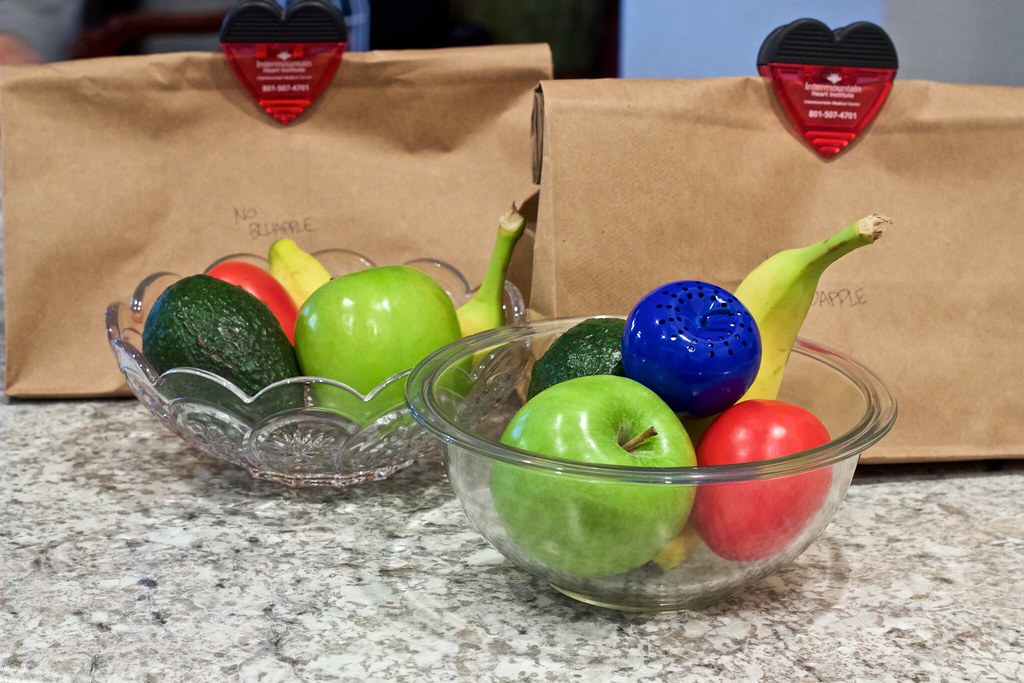
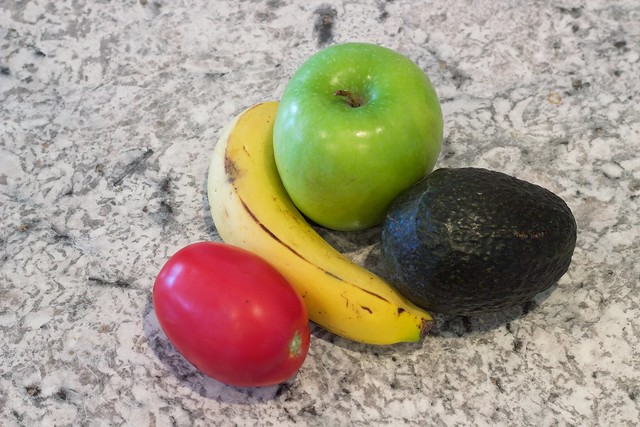
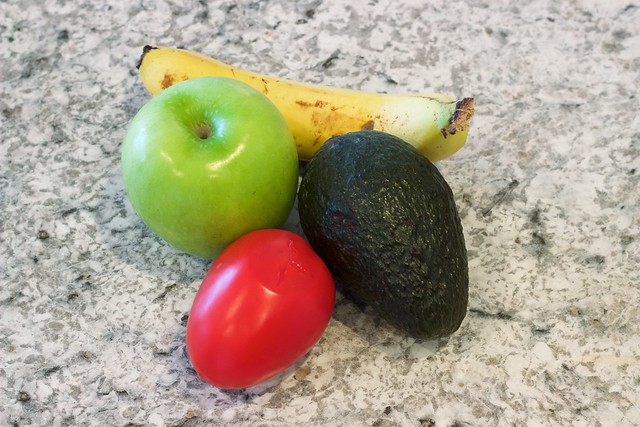
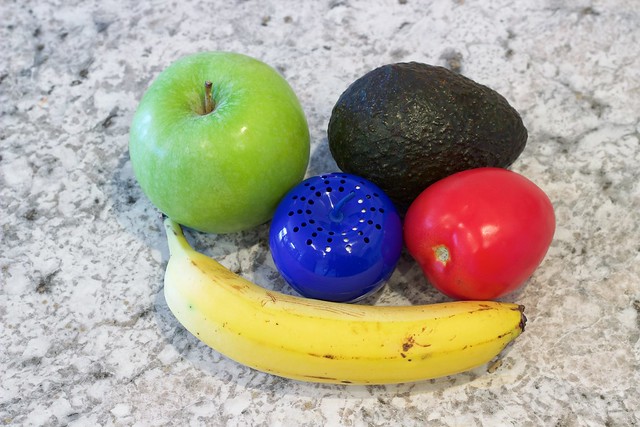
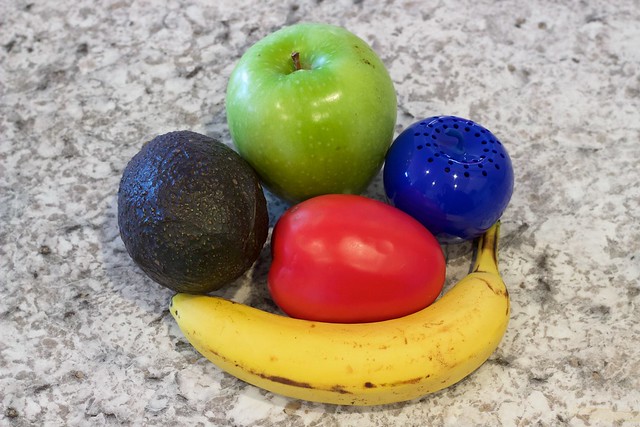
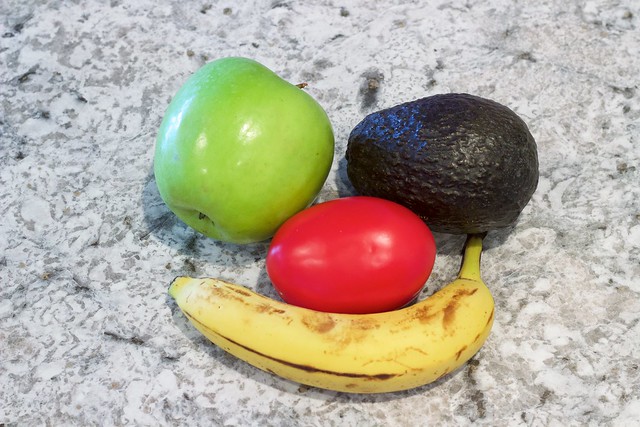
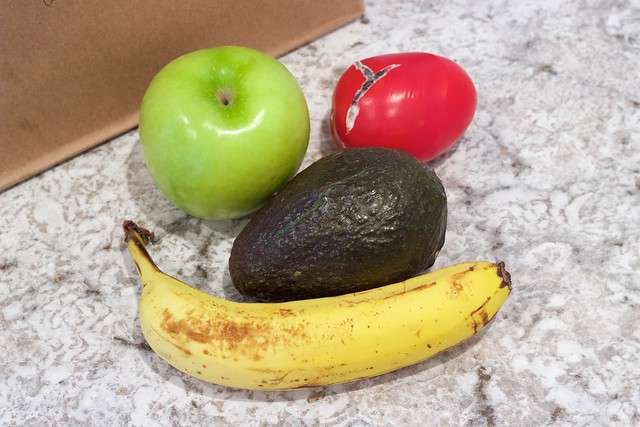
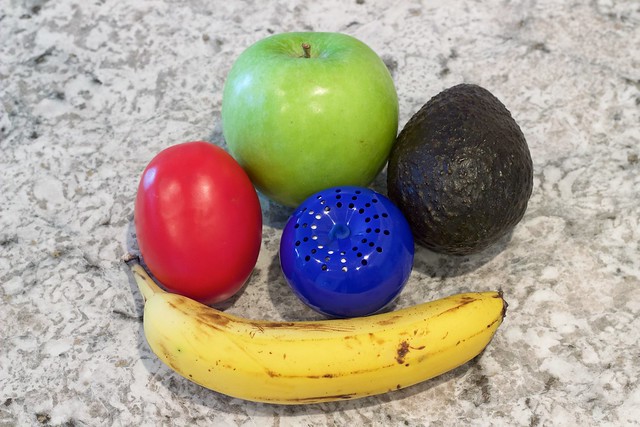
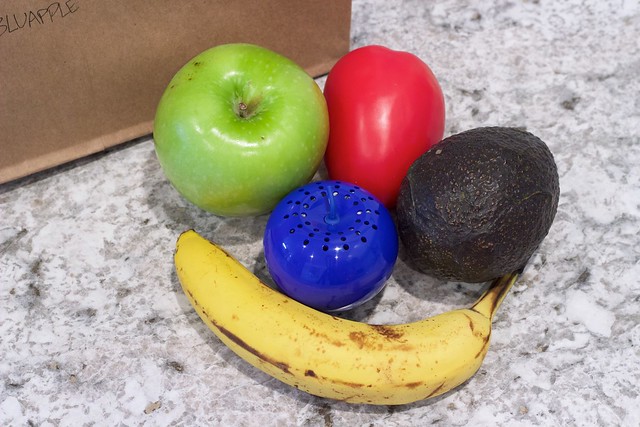
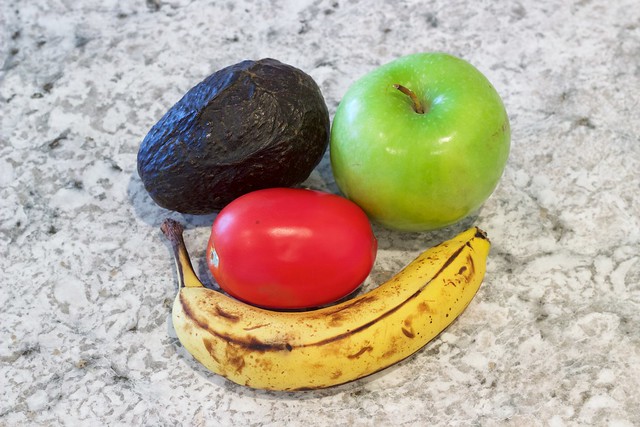
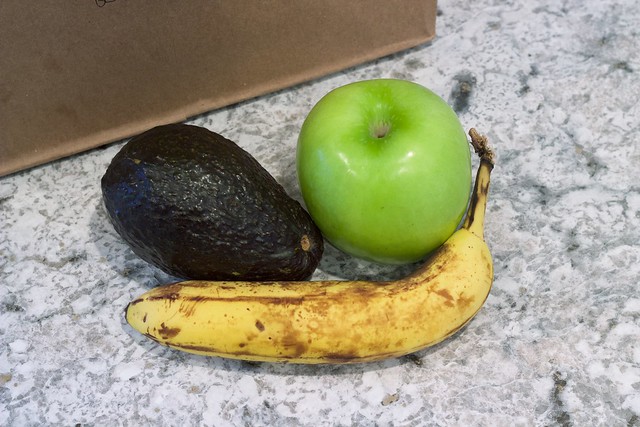
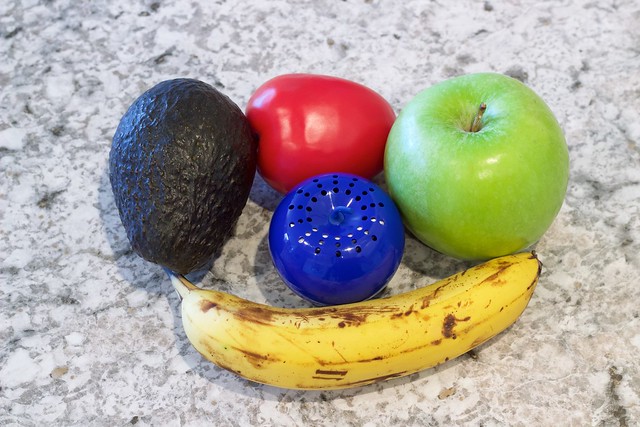
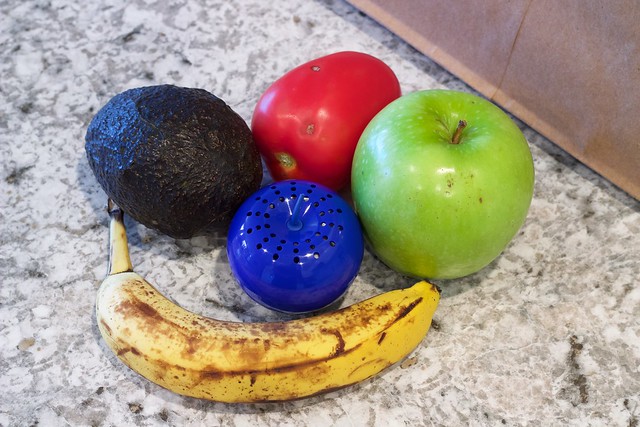
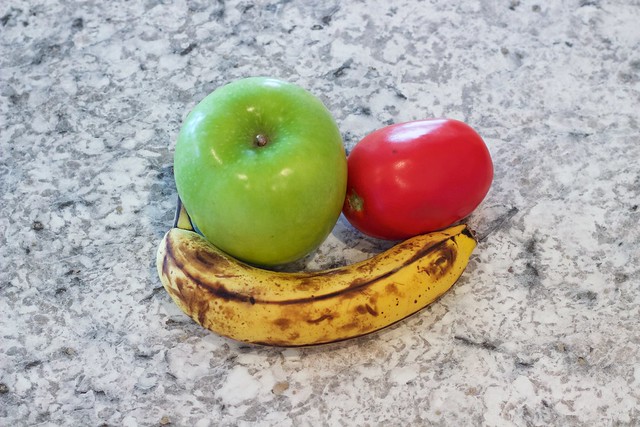
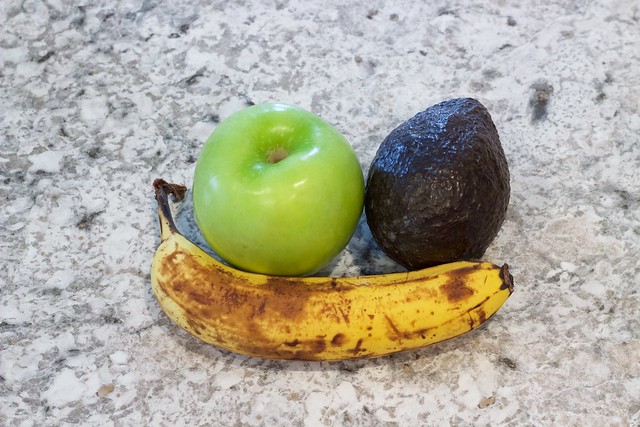
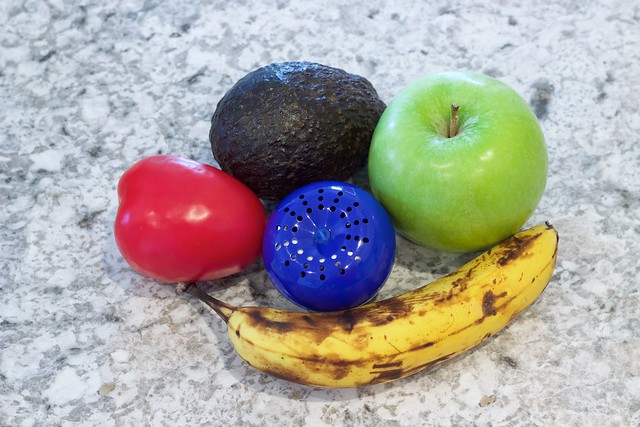
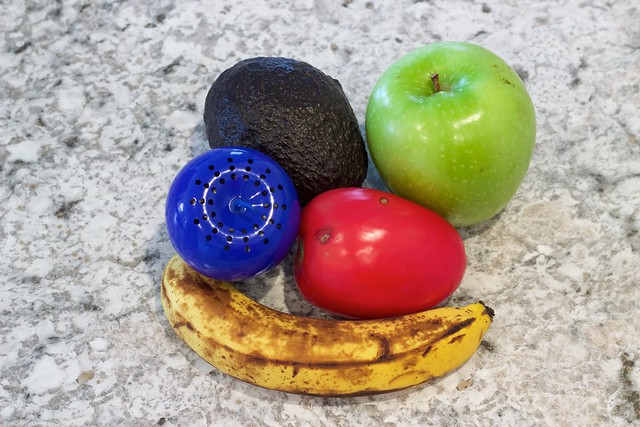
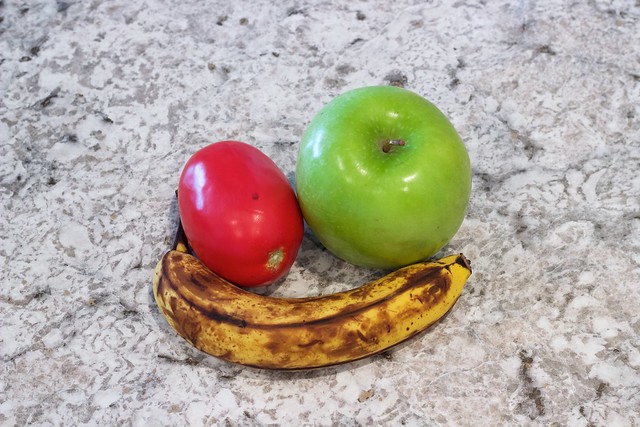
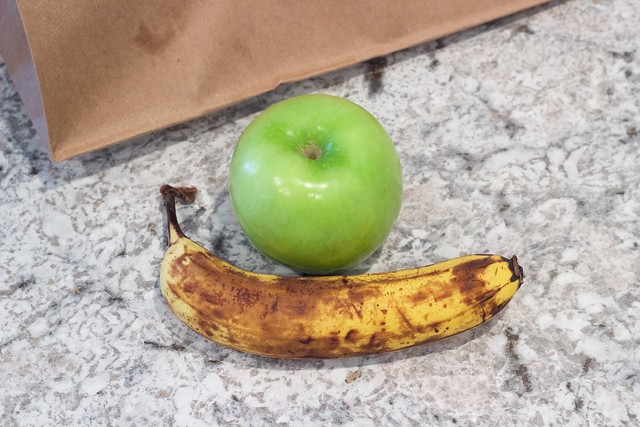
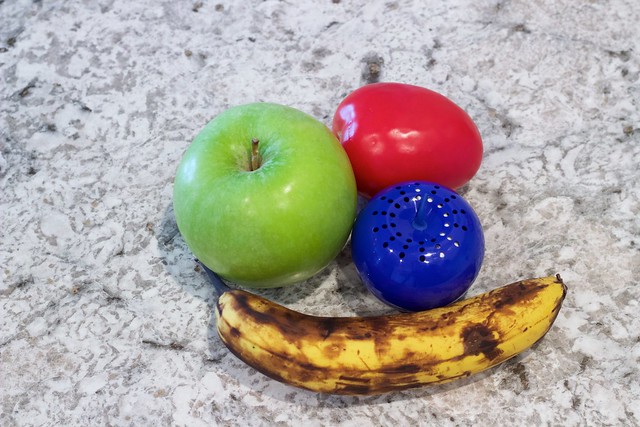

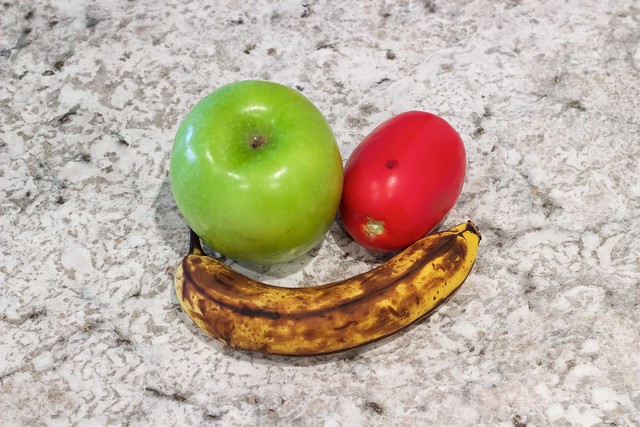
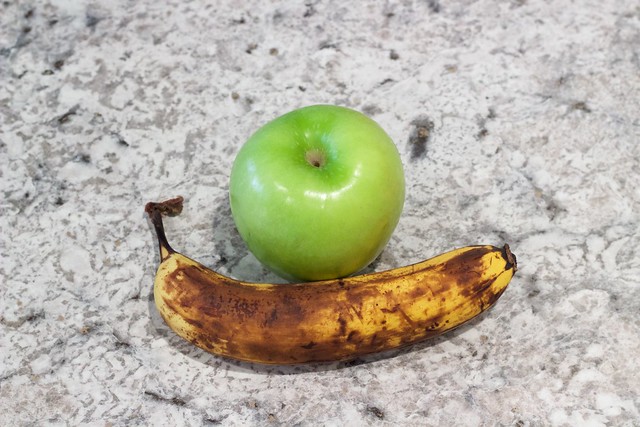
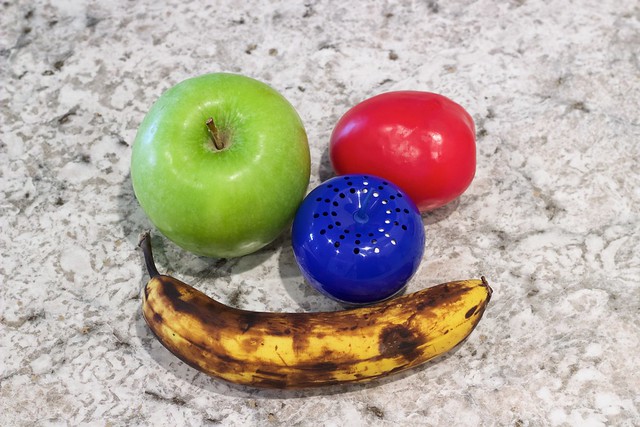
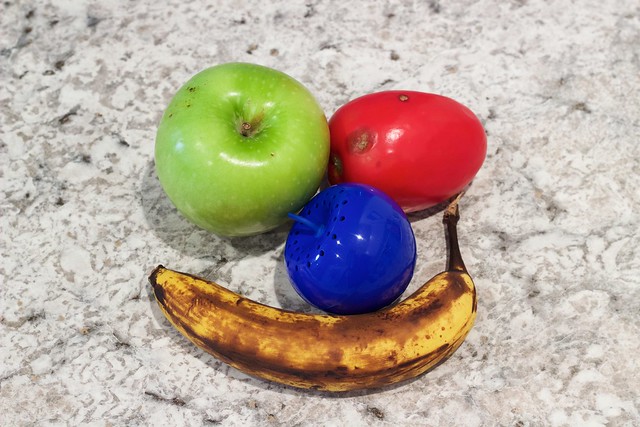
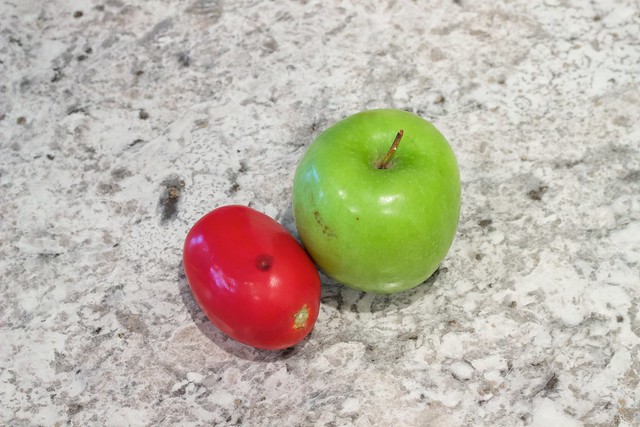
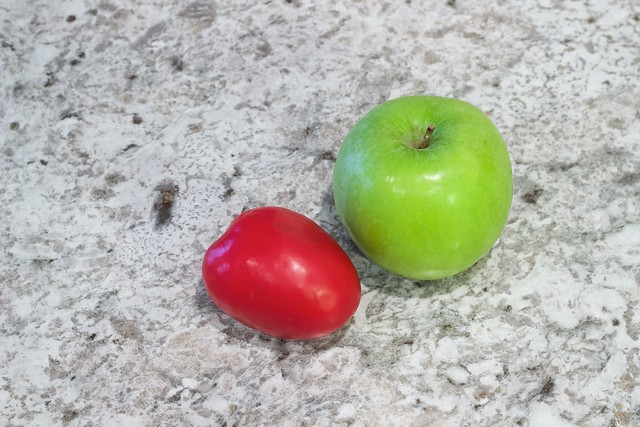
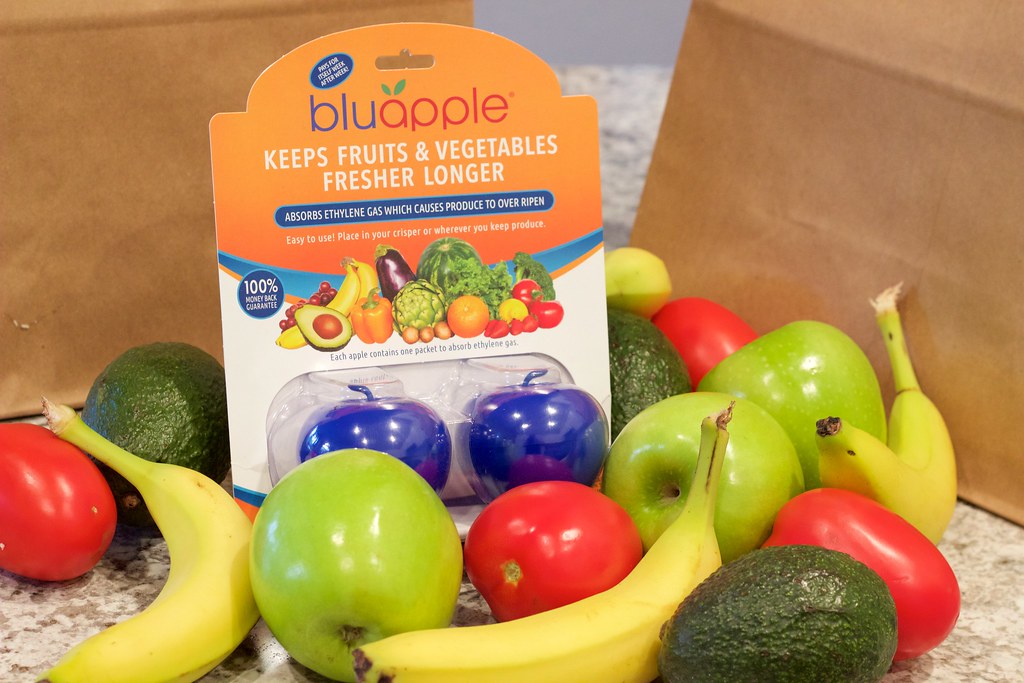
Why am I finding almost no articles about keeping greens fresh? It’s always fruit fruit fruit…. and even if they say “veggies” they lean towards potatoes and fruit.
In advice columns about how to store “produce”, they fade from the details about greens.
Does bluapple help with greens? Why on earth didn’t anyone test that?
Valid point. I don’t have the laboratory equipment necessary to test greens, and I don’t believe I would be able to give an accurate assessment through observation. In theory, it should help with greens as well. The reason fruits are usually the focus is because fruits produce far more ethylene than greens. Fruits are generally also more susceptible to spoilage from ethylene. Because of this, the tests are more effective using fruits.
The best storage I have discovered to date for storing greens is not with any device, but with a damp (not drippy or soaked) paper towel wrapped around it, and stored in an open plastic bag in the produce drawer of the refrigerator.
Hope that helps.